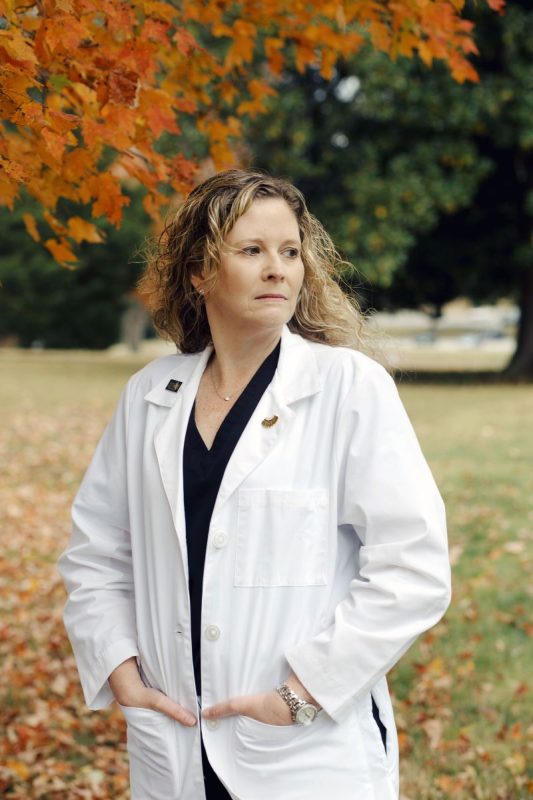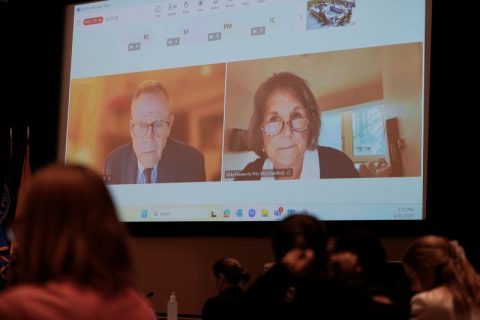Doctors across the United States who provide obstetrics and gynecology care have been confronted with new restrictions and uncertainties – and sometimes significant legal risks – that continue to unfold in the three years since the US Supreme Court’s Dobbs decision revoked the federal right to an abortion. But new research shows that ob/gyns didn’t immediately flee states with abortion bans, although decisions were highly personal and often required heavy moral calculations.
The number of ob/gyns in states with abortion bans increased slightly in the months following the Dobbs decision in June 2022, according to a study published Monday in the JAMA Network Open medical journal. By September, there were about 8% more ob/gyns in states with bans than there were before the ruling – in line with changes seen in states where abortion remained legal. The number of ob/gyns increased just under 8% in states where abortion is protected and 10.5% in states where it is threatened, the study found.
The study offers a glimpse into decisions providers made in the immediate aftermath of the Supreme Court ruling, but the US abortion landscape has continued to evolve in the years since.
Data from the Association of American Medical Colleges shows that medical residents are increasingly avoiding states with abortion bans; In 2023, the number of applicants to residency programs in states with near-total abortion bans declined by 4.2%, compared with a 0.6% drop in states where abortion remains legal. But interest in the field remains strong, according to the American College of Obstetrics and Gynecology. The number of applicants to ob/gyn residency positions exceeded the number of spots available this year, the professional organization said.
Dr. Lori Freedman, a sociologist and bioethicist with the University of California, San Francisco, has been researching how doctors make decisions around abortion-related care. She said that there are “complex layers” to every decision.
“The tone of the conversation is, ‘How do I do the best job I can for my patients, and how do I stay out of legal trouble at the same time, and how do I reconcile those,’ ” Freedman said, and the answer usually comes down to an individual’s risk tolerance.
Dr. Nikki Zite, an ob/gyn with a clinical focus on complex family planning, has stayed in Tennessee – where a trigger ban took effect in August 2022 – in large part because she has felt supported by a large institution that was willing to have discussions about the implications of the law and utilize resources to keep her and her colleagues safe.
“When it came down to it, I feel like being in an academic center in a banned state trying to continue to both provide care and educate students and residents and fellows on why abortion care is health care and part of what all ob/gyns should be trained to take care of is important,” Zite said.
“I was very privileged to be in a family situation and an institutional situation where I felt like I could do that without too much risk to my personal liberties and freedom.”
Dr. Leilah Zahedi-Spun, however, left Tennessee for Colorado – where voters recently approved an amendment to enshrine abortion rights in the state’s constitution – because she didn’t have those same protections. She is a maternal-fetal medicine and complex family planning provider focused on patients with high-risk pregnancies, making her work more likely to be affected by abortion restrictions.
“I had a target on my back,” she said.
The new research captured trends among more than 60,000 ob/gyns in the US, but only about 4% of them were maternal-fetal medicine providers. Movement across state lines among this small group of providers may not affect larger trends, but it can have a substantial impact on the population they serve.
When Zahedi-Spun was in Tennessee, she was one of only eight abortion providers in the state; now three have left.
“It’s less about the sheer volume of providers and more about what that care actually looks like,” she said. “I was the only person who trained residents to do procedures in the second trimester. So now they’re graduating multiple classes of residents that have never done that care before, and they’re going to go into communities and not be able to provide that care.”
While the circumstances of abortion bans and restrictions have raised the stakes, doctors are often weighing different sets of risks and benefits around where they work, Freedman said.
“I’ve been talking to doctors about working under conditions they don’t like for a very long time,” she said. “When you’re talking to everyday doctors for whom abortion wasn’t a big part of their practice, I feel like they’re frustrated, worried, they’re adapting, but they’re not necessarily leaving.”
But even in a provider doesn’t leave, abortion bans and restrictions may bring changes to the way they approach care.
“Doctors are definitely very uncomfortable, very scared. They’re doing a lot of things differently. They’re punting a lot of things that they could have handled before to other people who are more comfortable taking on that sort of risk or the intensity,” Freedman said.
Zite, who stayed in Tennessee, says she has faced doubt in the years since the Dobbs decision – not about the clinical decisions she’s made for patients, but whether she would have to defend her decision-making to authorities with significantly less medical knowledge. Sometimes the doubts were raised by other medical professionals while a patient was already on the operating table.
Early on, she considered moving to Illinois where she was still licensed – not to escape risk, but to help support the surge of patients who were traveling there from other states with abortion bans.
In 2024, about 15% of people who had an abortion – more than 155,000 – traveled across state lines to get one, according to recent data from the Guttmacher Institute. Illinois has been a key access point, providing care to more than fifth of all people who traveled for an abortion last year.
Zahedi-Spun says she still feels guilt about leaving her patients and community behind in Tennessee. She had only ever practiced in states with abortion restrictions and she felt a sense of pride in that.
“But when it came time to be like, ‘Am I willing to go to jail for that, or lose my license, or not be able to practice medicine anymore?’ That’s when the rubber hit the road for me,” she said. “I was like, ‘I can’t take care of anybody if I don’t have my license, and I do a lot of good for a lot of people in banned states here in Colorado now, and that feels like the fight I need to fight.”






